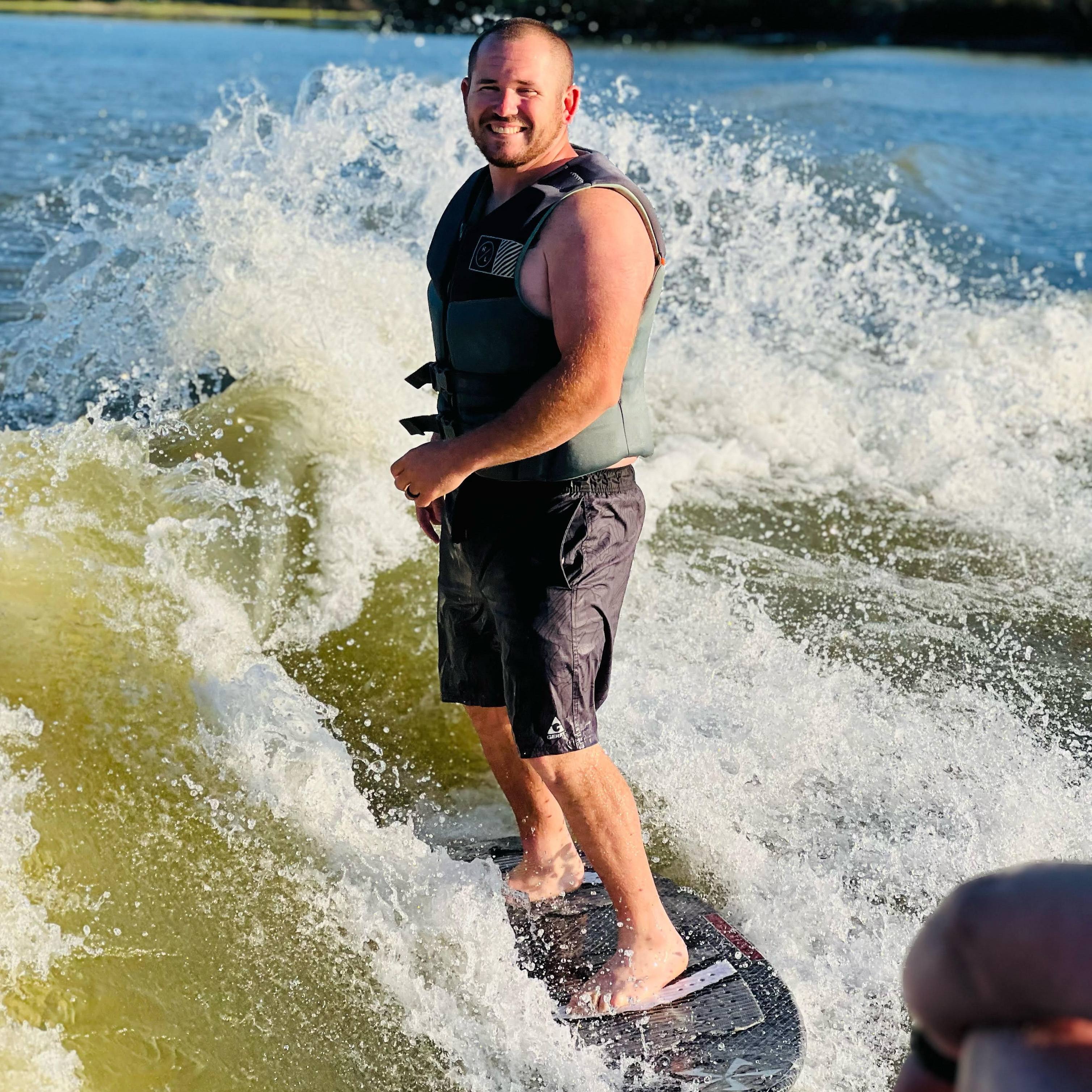-
Cardiovascular
Sharing Mayo Clinic: New heart, new start

Heart-pounding moments have been ever-present in Gregg Bohlig's life. He is a gifted athlete and was a three-sport star in high school, earning state player of the year in football and second team all-state guard in basketball. And he was offered a contract with a major league baseball team.
While in college, the Eau Claire, Wisconsin, native was the quarterback on the University of Wisconsin Badger football team and led the team to victory over fourth-ranked University of Nebraska in 1974.
After college, Gregg's heart-pounding moments continued. He ran 10 marathons and was fast enough to qualify for the Boston Marathon. When not running, he was golfing and playing tennis.
He brought this competitive spirit and passion to growing his insurance business and raising his three daughters with wife, Barb Bohlig. Overall, Gregg gave his heart quite a workout in his 69 years.
Surprising diagnosis
As an avid golfer, Gregg could be found on local courses with friends. It was there that he had his first indication that something might be wrong. He was used to walking the course, but he found himself out of breath after walking a short incline on the fairway.
"I thought: 'What the heck is this? I'm not that old,'" Gregg said in an interview with the Eau Claire Leader Telegram.
Gregg made an appointment with Daniel Kincaid, M.D., a cardiologist at Mayo Clinic Health System in Eau Claire. After a series of tests, Dr. Kincaid diagnosed Gregg with amyloidosis, which is a rare disease that occurs when an abnormal protein, called amyloid, builds up in the organs. The protein reduces the heart's ability to fill with blood between heartbeats. Gregg was experiencing shortness of breath because less blood was being pumped with each beat of his heart.
Over the next few years, Gregg's condition continued to worsen, with him becoming increasingly fatigued and having trouble catching his breath.
"Anyone who did anything with him, whether it was hunting, going for walks or playing golf, was extremely aware that he had no stamina," Barb told the Eau Claire Leader Telegram.
After trying other treatments, Gregg learned that a heart transplant was the only option left to save his life. While understandably nervous, his family also remained hopeful that a new heart would give Gregg a new lease on life.
Gregg was placed on the heart transplant list in the Midwest, and he waited. During this time, his condition continued to deteriorate, and Gregg was worried a heart would not arrive in time. Following the advice of his health care team, Gregg also got on the waitlist through Mayo Clinic in Arizona, where the chances of a heart becoming available would be greater.
A study of patients on the waitlist for heart transplants at Mayo Clinic in Arizona from 2015 through 2017 showed that 76% received a transplant within three years, 65% within a year and 19% within 30 days. Gregg and Barb temporarily relocated to Arizona with the hope of returning home with a new heart.
Early surprise
Gregg didn't have to wait long. Just six days after arriving in Arizona, he received the call he had been hoping for: A heart was waiting for him.
"I kept thinking that moment was way off in the distance," says Gregg. "It was just so surreal."
Gregg told Barb the good news, and they quickly drove to Mayo Clinic in Arizona for surgery. Gregg recalls being wheeled into the operating room in the morning and being mesmerized by all the machines and activity. The next thing he remembers is waking up 13 hours later and thinking, "Oh, my God, I wonder if I have my new heart."
During his surgery, the transplant team removed Gregg's diseased heart and sewed the donor heart into place. After that, the surgeon attached the major blood vessels to the donor heart.
"The diagnosis of amyloid carries a stigma that there may be little hope or options with regard to care," says Julie Rosenthal, M.D., a Mayo Clinic cardiologist and heart transplant surgeon. "Thankfully, the paradigm is changing with increased awareness, advancement of amyloid targeted interventions, and the ability to proceed with advanced therapies like heart transplant."
Since the launch of Mayo Clinic's heart transplant program in 1988, surgeons across Mayo Clinic have performed more than 1,600 heart transplant procedures. Gregg is one of 500 patients to receive a new heart at Mayo Clinic in Arizona.

Excelling during recovery
In typical Gregg fashion, he approached his rehabilitation with passion. In the hospital, Gregg was up walking the day after his transplant.
"I think it was his third day postop when he asked the staff if he could try the stairs," says Barb. "For him to be able to do two or three flights of stairs while still in the hospital was a good validator that his heart was doing better."
After being discharged from the hospital, Barb and Gregg incorporated walking into his recovery. Barb is a retired cardiac rehabilitation nurse, so Gregg was under her watchful eye and in good hands. Thanks to his excellent presurgery fitness and zeal during rehabilitation, the Mayo Clinic Transplant team allowed him to return to Wisconsin one month earlier than originally planned.
"We typically ask heart transplant recipients to plan on staying in the Phoenix area for approximately three months after receiving their transplant. This allows us to closely monitor their recovery, and make appropriate recommendations and medical adjustments," says Patrick DeValeria, M.D., a Mayo Clinic heart transplant surgeon. "Mr. Bohlig was extremely motivated and driven to have a successful recovery. His personal dedication to rehabilitation after his surgery, combined with the excellent, coordinated medical follow-up that could be provided in Eau Claire and Rochester, allowed us to feel confident that he could return home earlier than our typical plan."
As directed, Gregg continued his follow-up care at Mayo Clinic in Rochester, Minnesota, and Mayo Clinic Health System in Eau Claire. Dr. Kincaid recalls that "one of my problems in taking care of him was to keep him for overexerting." Two months after his transplant, Gregg was back out on the putting green and itching to begin golfing again.
Feelings of gratitude
Gregg and Barb are excited about his future, but they are also in awe of the gift he received. They are interested in learning more about the donor, but ultimately that decision rests with the donor family.
"We are hopeful to have an opportunity to thank that family," says Gregg. "It's a weird thing to have a medical miracle for you be the result of a tragedy for someone else. I went from feeling like I didn't have long to live to now knowing some people have lived with a heart transplant for 20 years or more."
In the meantime, Gregg is living life the only way he knows how: full of heart-pounding moments ― whether they be on the golf course, pheasant hunting with friends or as the family celebrated the birth of a grandchild. And the common thread through it all is gratitude for his new start.
"Between here (Eau Claire), and Rochester and Arizona, Mayo definitely saved my life," says Gregg. "It's hard to wrap your head around the idea that they can take out your old heart and give you a new one. I'm really thankful to be alive in this day and age when medical technology has advanced as far as it has. It makes you feel really blessed. God is good and gracious."
This story also is published on the Mayo Clinic Health System blog. You can find it there and share it with others.







